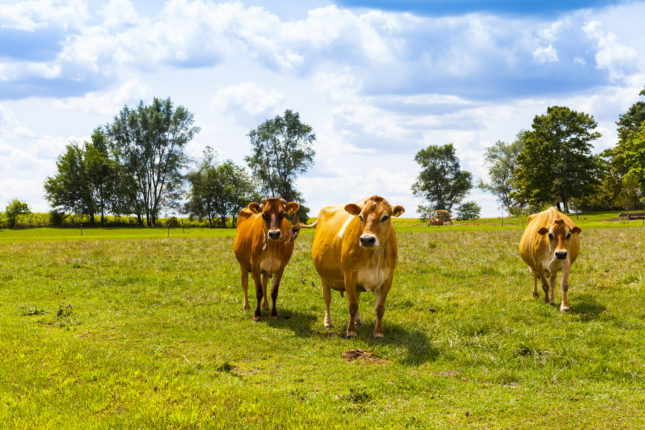
How Factory Cattle Farming Affects the Planet
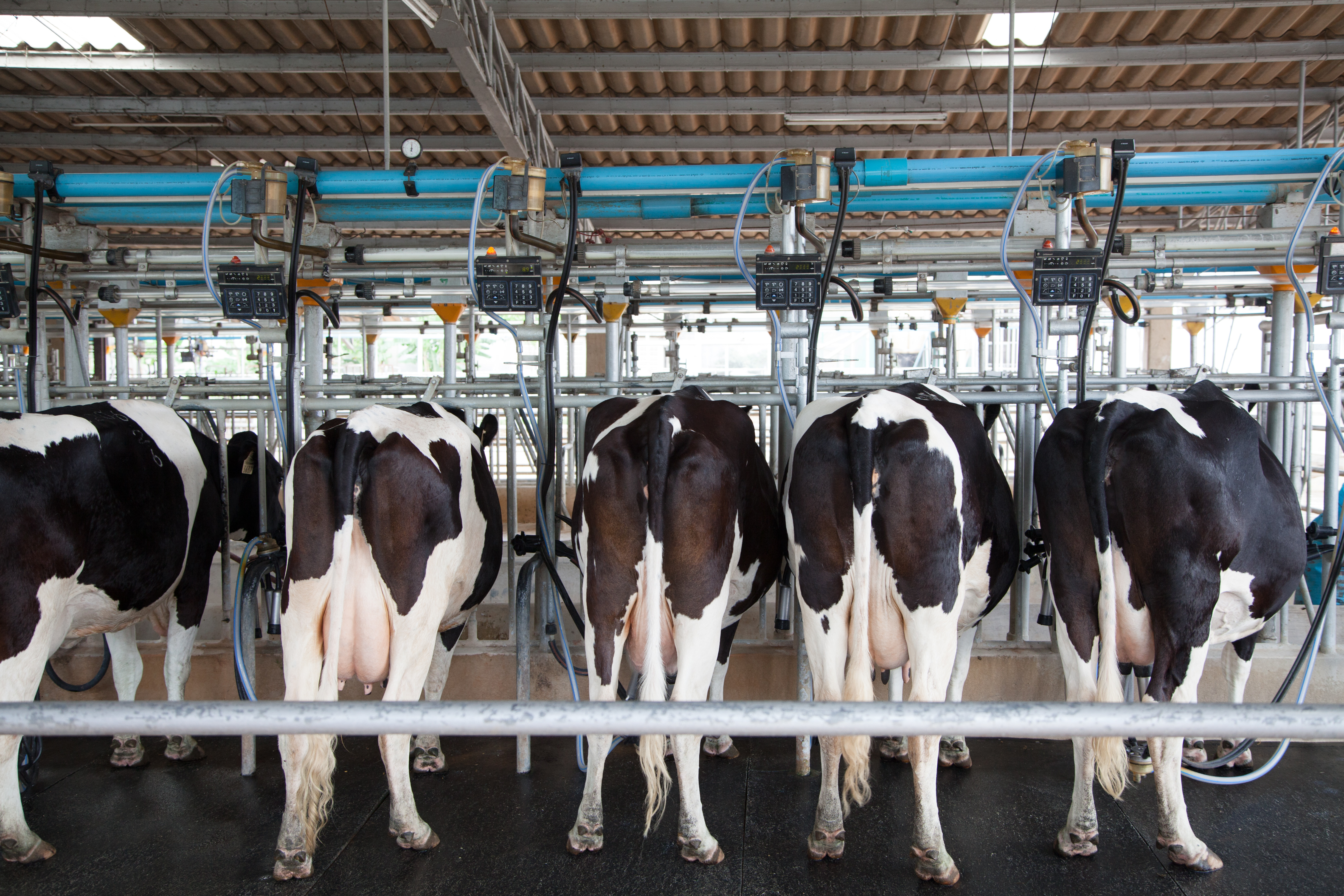
The long and arduous relationship between cattle and humans dates back more than 10,000 years to when humans first domesticated cows in Southeast Turkey. Often recognized as one of the oldest forms of wealth, the cow has seen humanity take their once balanced relationship and reduce it to nothing more than an unmindful science experiment driven by greed and abuse of power.
The results of this abuse are no secret, the dairy, leather, and meat industries have been revealed as cruel and heartless towards the animals all for the accumulation of meaningless wealth and some sick sense of power over other living creatures.
With their extensive history among the humans it is no surprise that cows have seen some of the worst treatment in the factory farming industry and have been branded, quite literally, as nothing more than a money making endeavor.
The Beef Industry Factory Farming
In 2015 and 2016 approximately thirty million cows were slaughtered commercially for the livestock industry. The process begins by taking young cows away from their mothers, often they can be heard crying for days after separation. Then they are subjected to various mutilations:
- They are de-horned to avoid harming each other and damaging their valuable meat.
- They are branded with 950 degree irons to identify ownership.
- They are then castrated using techniques like clamping until the testis atrophy, or the testis are simply ripped out. This is done because it is thought to improve meat quality via desired hormonal changes.
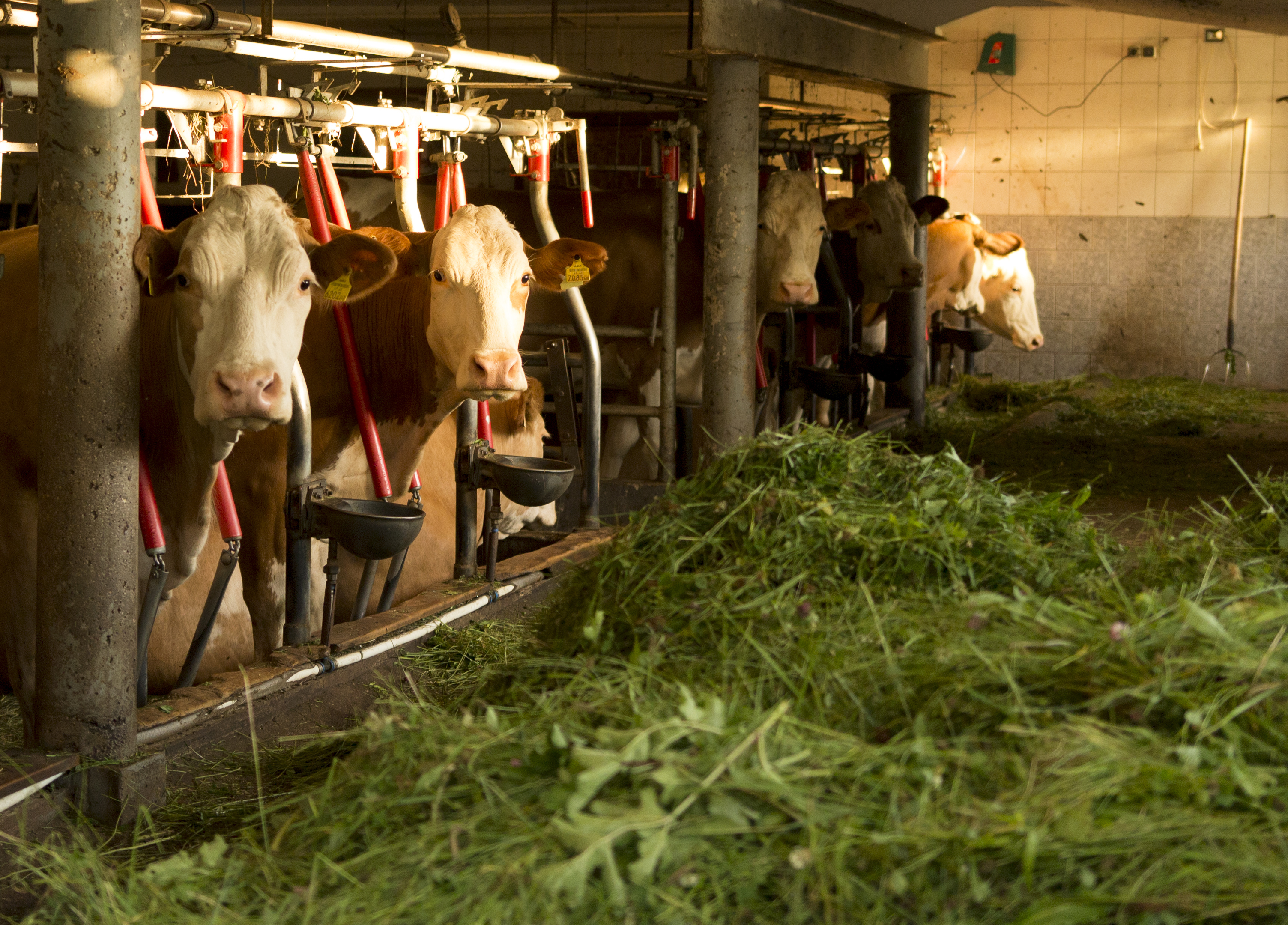
These practices are all being performed without sedatives, and all done within the first year of the cow’s life. As the young cow ages to around one year they are transported to a feedlot.
Feedlots
Feedlots are large fields where thousands of cows live together being fed a variety of corn by-products, various grains, and vitamin or mineral supplements, a very unnatural diet compared to the grass diet cows for millennia were used to. This feed is typically premixed containing chemical preservatives and often antibiotics to help thwart sickness.
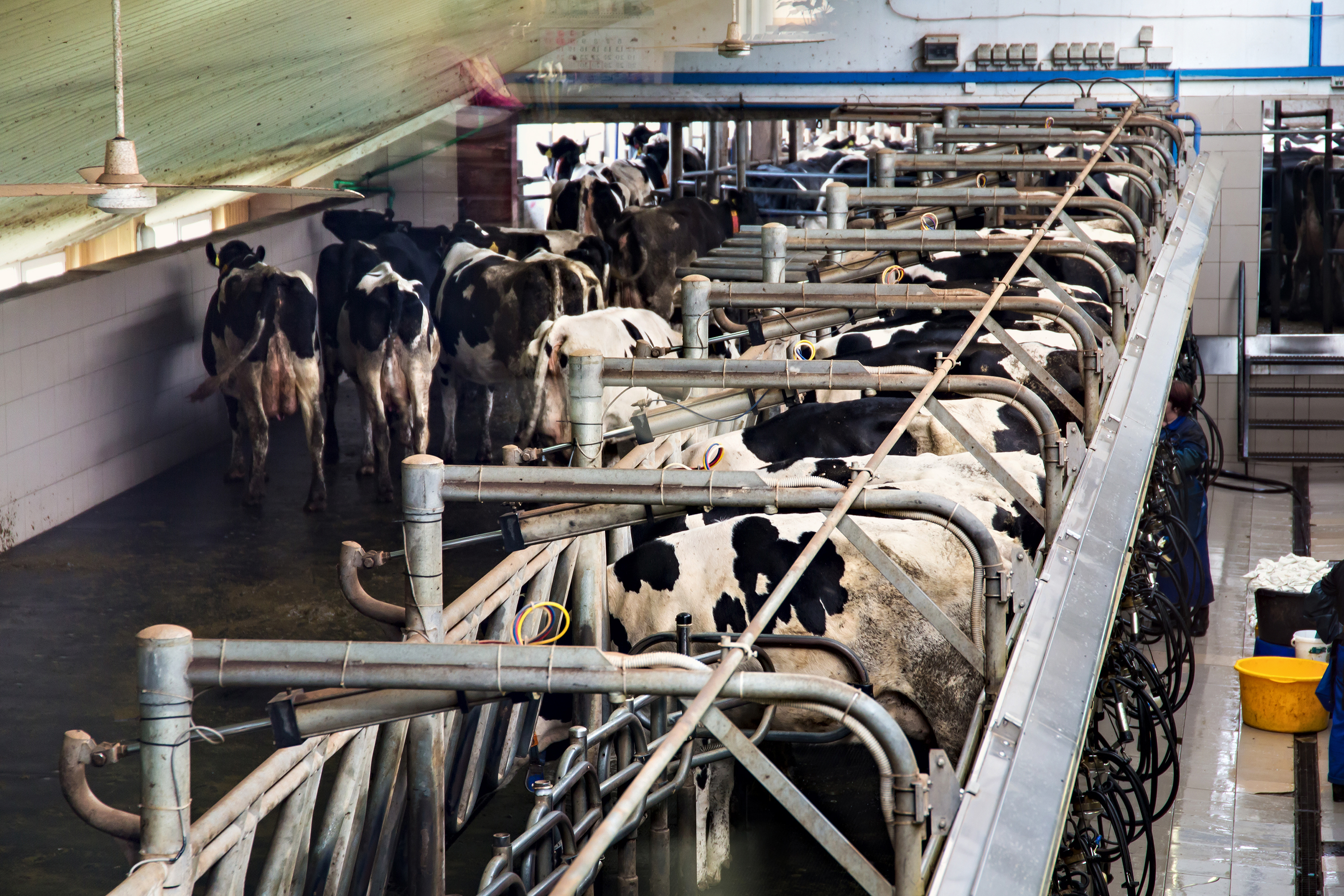
The feedlot is a confined space where the cows cannot move around freely and do not graze on natural grasses due to the high amount of excrement they are forced to thrive in. The lack of exercise and specialty diet ensures their extreme unnatural growth, often to an excessive weight much higher than weights that would occur on a grass fed diet so early in the cow’s life.
The cows spend the rest of their lives on the feedlot before being transported to the slaughterhouse. The over fattened, unhealthy cows barely reach five years of age before slaughter, when the average natural lifespan of a cows is approximately twenty years.
Dairy Industry
While the male cows endure extreme conditions and abuse their mothers receive no finer treatment. The female cows spend their lives being artificially inseminated over and over while confined in milking facilities where they stand on concrete floors and are milked by machines multiple times a day. Although the United States does not consume the most milk out of all the countries in the world, there is wide concern for the treatment of the cows and for the processing practices that take place once the milk begins its trip to the super markets.
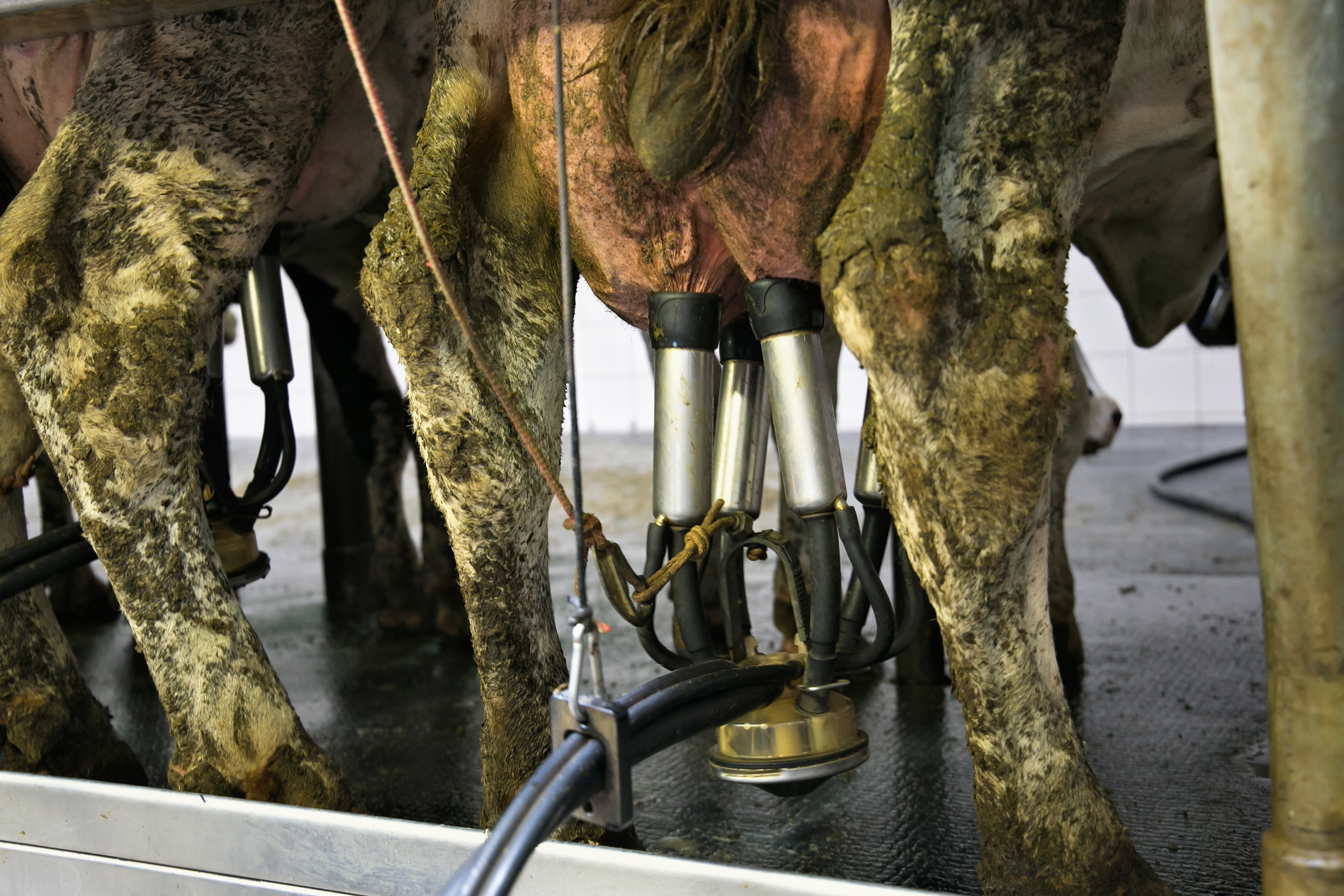
There are over 43,000 licensed dairy herds in the United States, the majority of these millions of cows are subjected to the same inhumane treatment. The process goes as such:
- Mother cows are artificially inseminated.
- Newborn calves are stolen from their mothers, taken to be raised for beef or veal.
- Mother cows are milked by machines.
- They are milked as much as possible, typically given hormones to produce as much milk as possible.
- The milk is sent for processing and the cycle starts over again.
Artificial Insemination
Artificial insemination accounts for 80% of pregnancies of cows used for dairy, not unlike humans, cows carry their young for nine months. The newborn cows are stole away from their mothers on the very first day of their lives, the calves and the mothers can often be heard crying out to each other for days after their separation. To increase milk yields the cows are inseminated once a year, this allows the mother cow very little resting time in between pregnancies.
The practices used for artificial insemination are blatantly violating to the mother cows. The person inseminating the cow dons a long, lubricated rubber glove and forces their way inside the cow to clean any debris or manure.
Then a gun yielding bull semen is inserted into the cow’s vulva. They force their other arm into the rectum of the cow to better locate the cervix and then thread the gun into and through the cervix, subsequently releasing the semen. This unsettling image is standard practice in the dairy industry, very obviously a violation of the cow’s reproductive organs, and incredibly unnatural.
Milking Machines
Once the mother cows start producing milk they are put into confined spaces on concrete floors to be milked by machines. These machines are designed to extract as much milk as possible at the quickest rate. The menacing machines use an electric vacuum pump attached to various ‘claws’ in each stall where the cows are confined. The claws are attached to the udders of the cows and the milk is pumped into large stainless steel containers.
Although it is claimed that the machines are efficient and safe, many cows are diagnosed with mastitis, a painful swelling of the udder. Along with the over use of these machines increased levels of mastitis are also attributed to the use of growth hormones used to increase yields.
This is the life of the mother cow, being impregnated each year and milked to exhaustion by machines. The cows are typically kept alive a short five years on average before being sent to the slaughter house. The only exception is if they die or are rendered useless before they reach the young age.
Milk Processing
Once the milk is taken from the mother cows is goes through rigorous processing. The common misconception that milk is ‘natural’ is challenged by these processing practices. The milk is chilled and agitated in its stainless steel container as to not spoil. The milk is sent to labs for testing and given a grade. It is basically strained for debris and sediment and some fat is stripped out to be used for butter and other dairy products.
It is then pasteurized by heating the milk to around 161 degrees to get rid of pathogens and bacteria that cause it to spoil quickly. It is heated for 15 seconds then quickly cooled. After the pasteurization the milk is homogenized, where fat is emulsified to ensure the cream does not separate. Finally the milk is sent away to be packaged and sold. The intense processing leaves the milk very different than when it is first pumped from the udder, the bleach white liquid you see in store is very far from natural and vitamin-rich, contrary to what the manufacturers would have you believe.
Slaughterhouses
If the ill-fated cattle manage to survive their terrible treatment on the feedlot or in the confined spaces of the milking facility they earn no freedom. The exhausted cows are transported to slaughterhouses on cramped trucks often enduring the journey for days at a time without food, water, or temperature regulation, regardless of the weather.
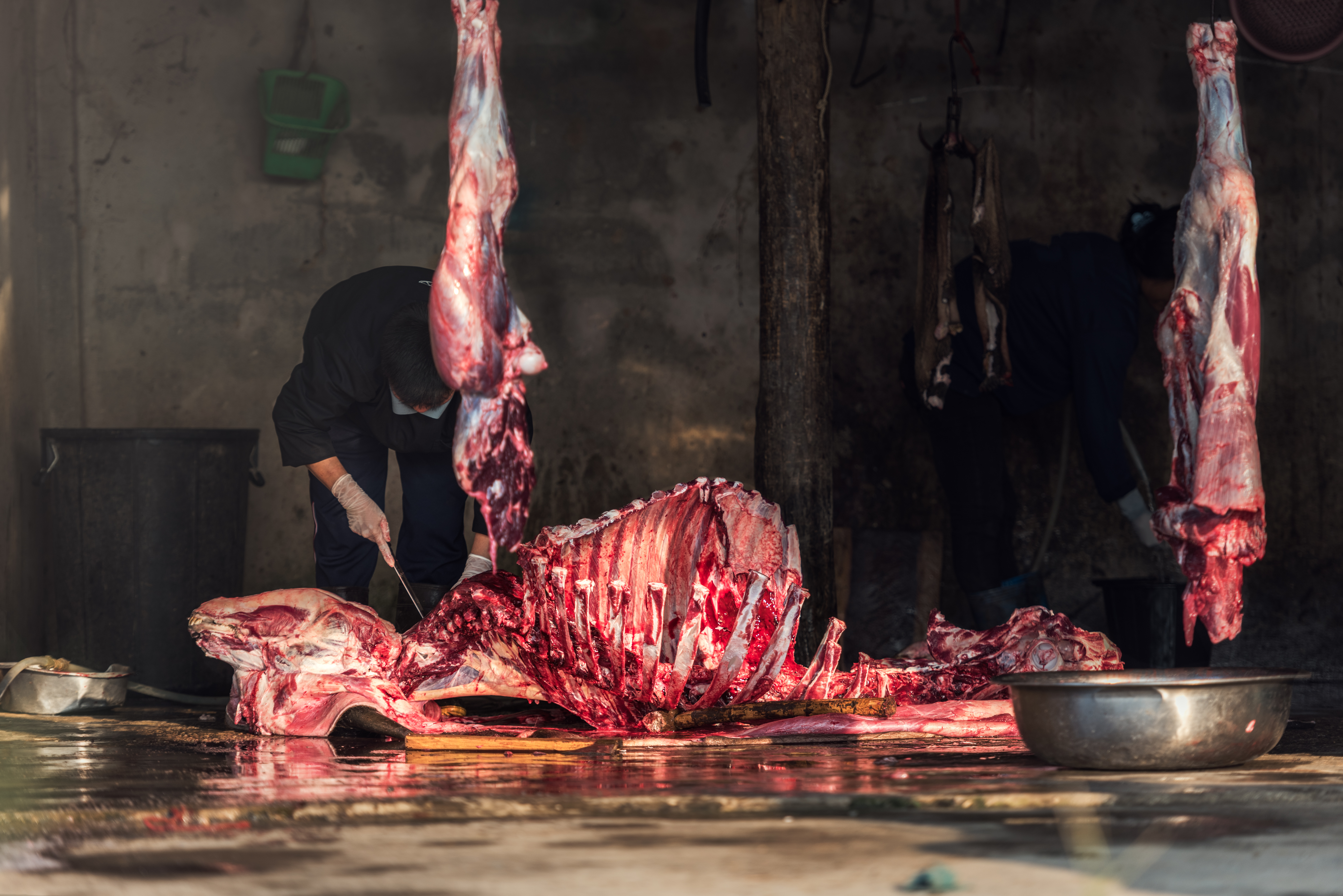
The stressed cows reach the slaughterhouse and are shuffled to their demise, if they are too exhausted to walk the ‘downed’ cows are dragged to the slaughter facility. Other cows show signs of reluctance, knowing full well where they are headed, they refuse to leave the truck and are subsequently stabbed with electric prods or chained up and dragged by their heartless keepers.
The animals are filed through a chute where they are to be stunned or rendered unconscious by a bolt gun to the head. This is a short-handed way of somehow justifying their eventual slaughter, that if they’re unconscious their slaughter is humane. Although the Human Slaughter Act of 1958 calls for this action, undercover research has shown that these practices are not enforced. The cows are often seen still moving and even crying out as they have their throats cut and are then mutilated piece by piece.
Conclusion
The factory farming industry and its various exploits are inhumane and harm not only living creatures but damage the economy and environment. Whether its exploitation of impoverished workers or the immense amount of greenhouse gases caused by the dense populations of cattle on these farms the industry has a lot of blood on its hands.
The facilities designed to produce as much meat and dairy as possible are beasts of capitalism and a distinct sign of humanity’s current standard of excess, and the U.S. is at the forefront of this dangerous lifestyle. Although there are starving people all over the world, the United States throws out half of its food supply each year, and we see these stories more and more, even specifically for the dairy industry as well, when we have farmers intentionally throwing out millions of gallons of milk due to surplus.
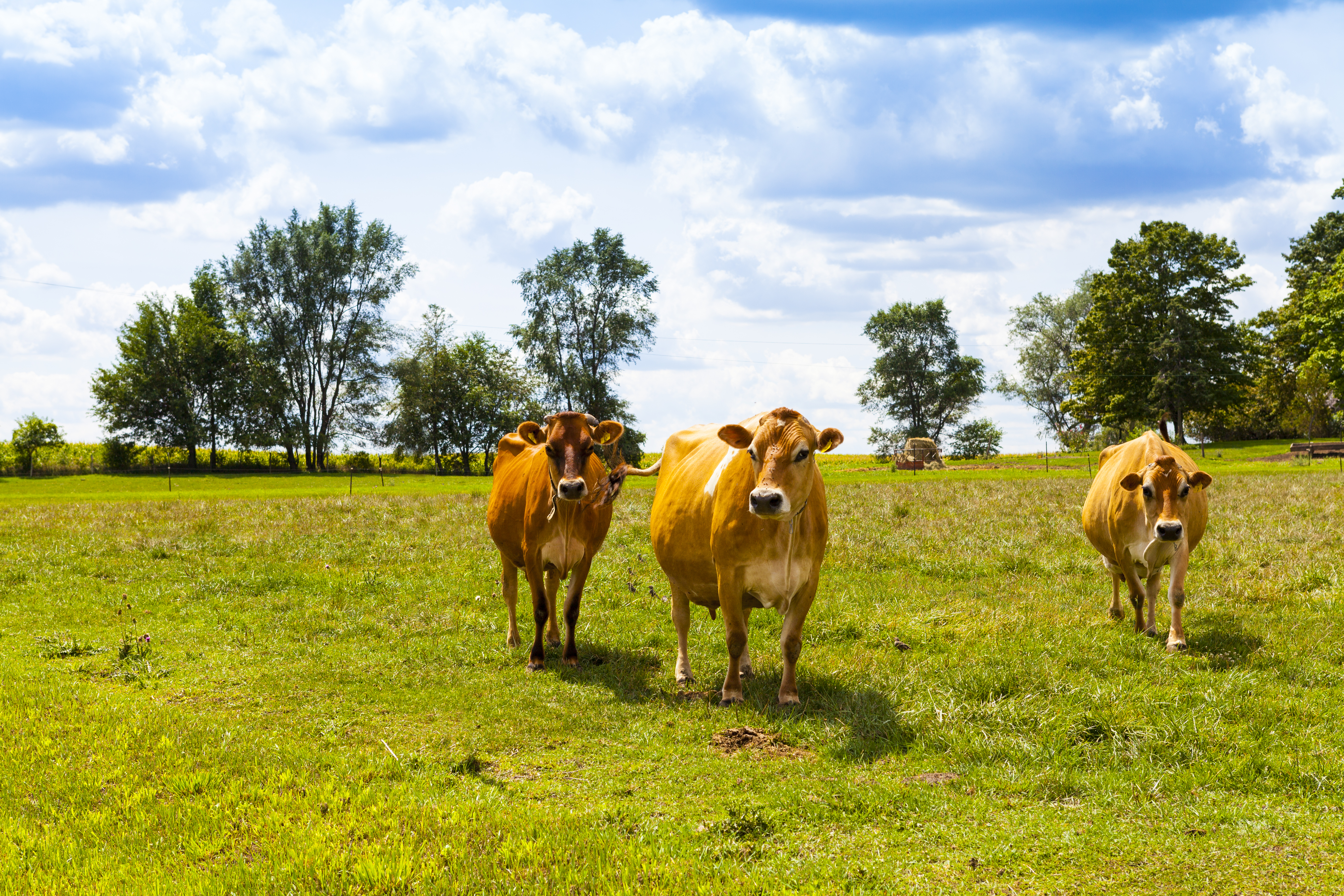
So why must these industries need to produce as much as possible 24/7? It is certainly not for the good of mankind, or the other creatures of the Earth. Many of our fellow men and women take to social media to evoke change in these industries; they let their voices be heard through protest in the streets and on the personal battlegrounds. One sure fire way to change these evil companies is by not contributing to their onslaught, adopting a vegan diet being one of the most effective and healthy ways to contribute to this much needed change.


